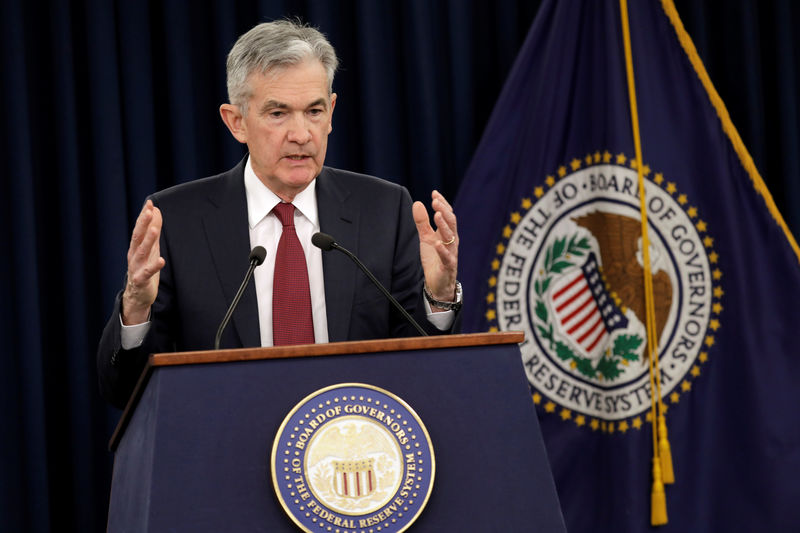By Rahul Karunakar
BENGALURU (Reuters) - The U.S. Federal Reserve will remain patient for a little longer than thought just last month, waiting until the third quarter before raising rates once more, and then stay on the sidelines, a Reuters poll of economists showed.
That comes on the heels of a similar Reuters survey which concluded there is a significant risk the European Central Bank goes into the next economic downturn without having raised interest rates at all.
The latest poll of over 100 economists taken March 11-14 also lines up with recent remarks from Fed Chair Jerome Powell, who said the central bank does "not feel any hurry" to change rates again.
But with growth due to slow over the next three years and the Fed's preferred measure of inflation not expected to show any significant pick up, an increasing number of economists have turned dovish on the U.S. interest rate outlook.
"The Fed is...not in a hurry to raise its target rate again anytime soon," noted Harm Bandholz, chief U.S. economist at Unicredit (MI:CRDI). "Accordingly, we have taken the possibility of a June hike off the table. While the Fed may be eyeing a later rise, we continue to expect that the window of opportunity will close in the second half of the year."
While economists polled unanimously expect the Fed to keep rates unchanged at its March 19-20 meeting, 55 percent of them said it will have hiked at least once by end-September, when the median suggests it will be 25 basis points higher at 2.50-2.75 percent.
Just last month, the consensus predicted a hike in the second quarter.
The latest poll also showed an increasing number of economists predicting no further rate hikes. Financial markets have also priced out further rate rises.
"We no longer expect any rate hike this year...(and) we doubt that the economic data will be strong enough to build a case for a re-start of the hiking cycle," said Philip Marey, senior U.S. strategist at Rabobank.
Over one-quarter of respondents who provided forecasts going all the way out to end-2020 predicted the Fed would have cut rates at least once by then, including two who forecast that to happen as soon as the third quarter of this year.
U.S. gross domestic product (GDP) is forecast to expand at an annualized rate of 1.6 percent this quarter, down from the 2.6 percent in the previous quarter and a cut from 1.9 percent predicted last month.
GDP growth is then forecast in a 2.0-2.5 percent range throughout 2019, slowing to 1.8 percent by mid-2020, according to the consensus.
But the median probability of a U.S. recession in the next 12 months held stable compared with February at 25 percent, with the chances of a recession in the next two years steady at 40 percent.
"The Fed is normally one of the major factors in recession (and so) we just think they will be very careful here," said Ethan Harris, head of global economics at Bank of America Merrill Lynch (NYSE:BAC).
"We don't have factors that have been associated with every modern recession in the U.S.," he said. "It has to be something big, like a major escalation in the trade war causing a freezing up of business investment, a big sell-off in the equity market. That would probably be enough to create a recession."

(Analysis and polling by Sujith Pai, Tushar Goenka and Anisha Sheth; additional reporting by Manjul Paul and Sujith Pai; Editing by Ross Finley and Chizu Nomiyama)